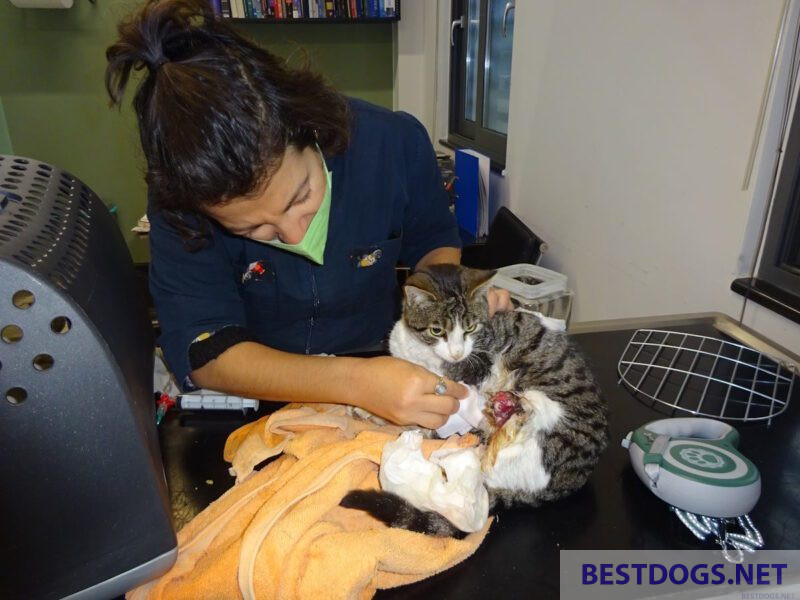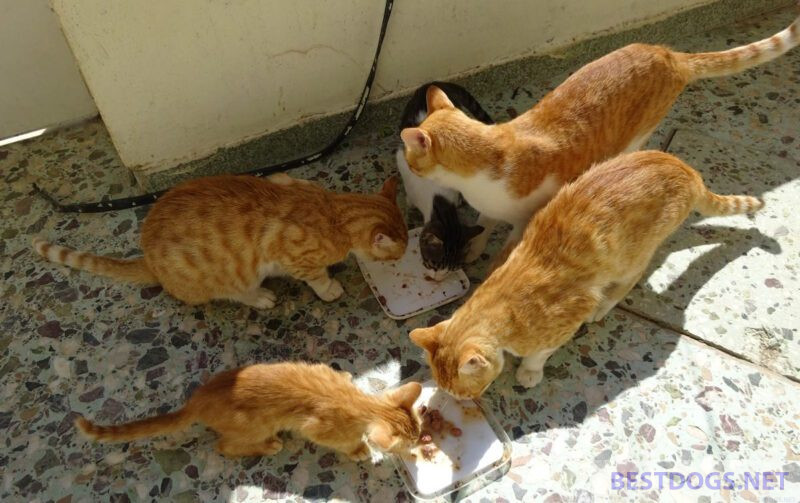How feral rescue cats get a home.
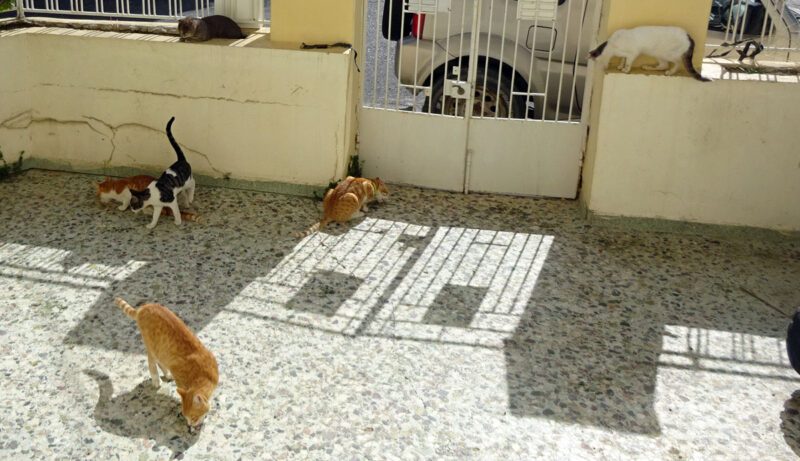
All reports about cats:
Feral cat rescue
Table of Contents
Difference between feral and stray cat
Many people think that the terms ‘stray cat’ and ‘feral cat’ are interchangeable, when in fact there are major differences between the two. Stray cats, feral cats (hereafter also referred to as rescue or wild cats) and domestic cats are all genetically identical and to some degree biologically related, but there are significant differences between their characters and lifestyles.
A cat becomes a stray when it is abandoned by its owners or strays too far from its home and becomes lost. A stray cat can become feral after a long period of absence from humans. They may also end up in a colony of feral cats in order to survive or because they have been abandoned.
A true feral cat has never had any contact with humans and is not socialized. Most feral cats are also born feral. This means that they are born into a feral cat colony and have no contact with humans from birth.
In fact, humans are perceived as a threat by feral cats and are therefore avoided by them. Most feral cats will flee to hiding places such as bushes or gullies when approached by a human.
The most important difference between a feral cat and a stray cat is that even if a stray cat is somewhat feral, with proper treatment and rehabilitation, it can be rehomed to the point where it becomes a house cat again.
Even a feral kitten, if young enough, can be socialized with care and patience.
A true feral cat, on the other hand, can probably never become a true house cat.
Sterilization of feral cats
There are several reasons why trapping and relocating feral cats is important. The most important one is sterilization!
Cats can reproduce at an incredible rate. To put this in perspective, an unsterilized female cat with an average life expectancy of about 7 years will give birth to about 100 kittens in her lifetime, assuming she gives birth to 6 surviving kittens each year.
So if a colony starts with 20 cats, this number will massively increase to about 2,000 cats in the course of seven years!
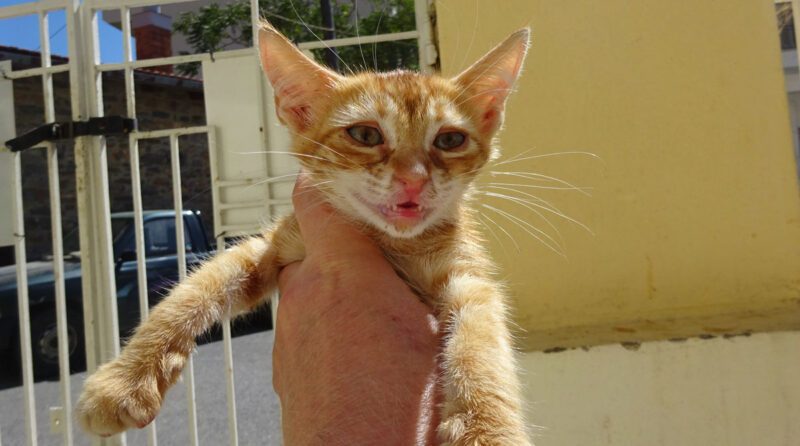
So the overpopulation is a huge problem. However, this problem starts with domestic cats and abandoned cats. If a female cat is not spayed and is impregnated by a roaming, unneutered male cat, the problem of overpopulation or ‘unwanted kittens’ in households can be exacerbated.
Overpopulation leads to numerous problems that affect the welfare and safety of feral cats. One of the worst is human cruelty. Feral cats are often viewed as pests, and there are far too many reports of abuse inflicted upon them. Feral cats in suburban areas become a problem when they get into turf wars with domestic cats, especially during mating season.
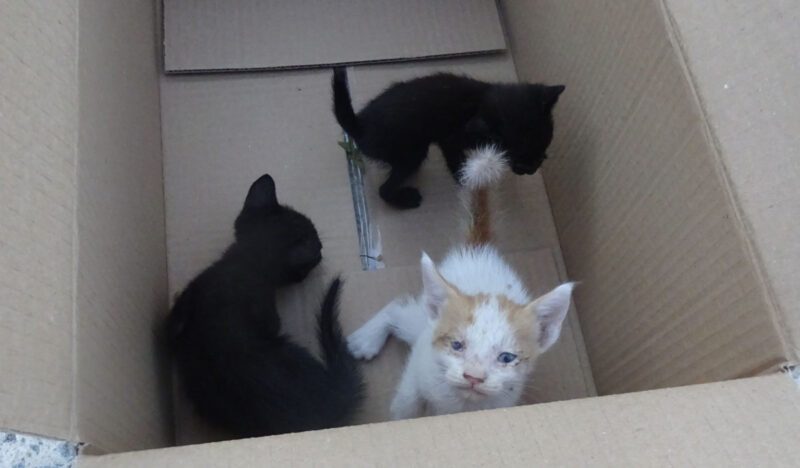
Trapping, neutering and returning feral cats is therefore a way to allow these furry animals to live a quiet, happy and peaceful life alongside the domestic cat population.
The advantage of this procedure is that it ends the cats’ reproductive cycle. Thus, it not only solves the problem of overpopulation of feral cats in many communities, but also improves the overall well-being of the cats.
The stress, noise, and behavioral changes associated with cat mating and pregnancy cease the moment these measures have been implemented.
With time and increasing experience, cat lovers will gain the confidence with this procedure to properly handle these shy creatures.
However, it is important to point out that some preparations must be made before you start going out and actually trying to catch wild animals!
These preparations should begin about two weeks before the actual catch date.
Tasks that should be done before catching these animals include:
Fancy Feast Poultry and Beef Feast Classic Pate Collection Grain Free Wet Cat Food Variety Pack - (Pack of 30) 3 oz. Cans
$26.23 (as of April 25, 2024 09:07 GMT +03:00 - More infoProduct prices and availability are accurate as of the date/time indicated and are subject to change. Any price and availability information displayed on [relevant Amazon Site(s), as applicable] at the time of purchase will apply to the purchase of this product.)Purina Fancy Feast Wet Cat Food Medleys Florentine Wet Cat Food Variety Pack - (2 Packs of 12) 3 oz. Cans
$30.64 (as of April 25, 2024 09:07 GMT +03:00 - More infoProduct prices and availability are accurate as of the date/time indicated and are subject to change. Any price and availability information displayed on [relevant Amazon Site(s), as applicable] at the time of purchase will apply to the purchase of this product.)Fresh Step Clumping Cat Litter, Extreme Odor Control, Mountain Spring Scent With Febreze, 14 lbs
$11.39 (as of April 25, 2024 09:07 GMT +03:00 - More infoProduct prices and availability are accurate as of the date/time indicated and are subject to change. Any price and availability information displayed on [relevant Amazon Site(s), as applicable] at the time of purchase will apply to the purchase of this product.)- Create a team by finding people who share the same passion for cats and learn everything together or share experiences, including with the local cat organizations in their area.
Teamwork will make the expeditions into the world of rescue cats easier to manage. - A record should be kept of all the cats and kittens you feed. Observations to record in this book about each cat include whether it is friendly or fearful of the people around it. It is also important to note which cats get along, and what health problems need to be addressed.
- Cat traps will need to be purchased or rented. Cats are caught in the same traps used for live trapping of small animals – such as large squirrels and raccoons. These traps can be purchased at most major hardware or agricultural stores. However, if they are not in stock there, they can usually be ordered from suppliers there.
Alternatively, one can order the traps online and have them delivered. - A feeding schedule should be established, and the cats fed at least 2 weeks in advance. The food should be placed in the traps themselves so that the cats get used to going into the traps. Of course, the traps will not be activated at this time.
- Care must be taken to ensure that each cat trap is strategically placed so that it does not interfere with or endanger people or traffic.
- Preparations for receiving the cats are important. The capture site or capture area should be prepared well in advance. This involves setting up a clean, well-screened area where the cats can recover after their procedure.
- It is important to make sure that the doors and windows of the recovery area can be safely closed before the cat is placed there. It is important to remember that injured and frightened cats in particular can be very nimble. It is advisable to set up a recovery room that opens into a secondary retreat area (such as a hallway or another room) in case the cats can escape from the cages and run past you and away before the proper time to release them.
- It is a good idea to carefully make a list of the equipment needed for the day the first traps are set.
- Appointments with the veterinarian for neutering the trapped cats should be made in advance.
- Cats should not be fed for 24 hours prior to setting the traps. Water, however, should continue to be put down. This will ensure that the cats will then be hungry enough to enter the traps with food the following day with confidence.
- The cats should not be caught with the traps on a day with extreme temperature values – i.e. very hot or cold – because this could be fatal for some of them.

Catching the cats
An experienced ‘cat catcher’ will say to you this: ‘A good start is half the battle!’. So this means making sure all the preparations are complete, everything is in order and well organized before the big day arrives, and you go out to trap the cats.
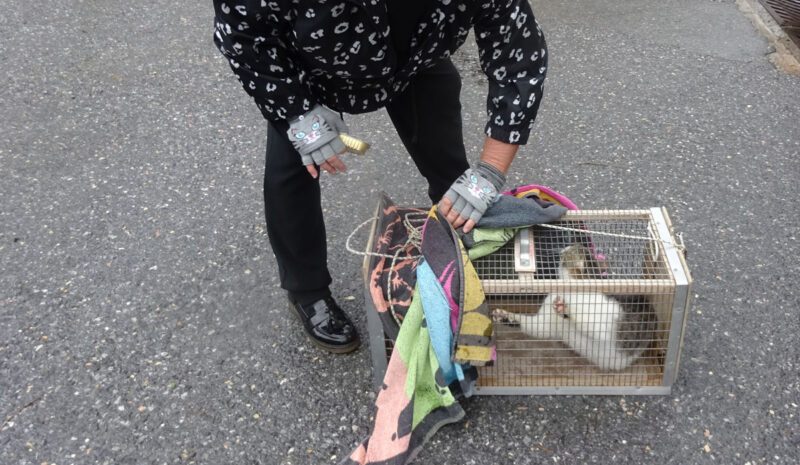
To do this, there are a few important things to consider:
- All traps, which are prepared with bait and activated, should be placed somewhat away from the cat colony. In addition, the floor should be completely covered with old newspaper and all traps should be numbered so that they can later be assigned to the trapped cats.
- All traps, especially the doors with the locking mechanism, should function properly. Each trap should be provided with a sufficient amount of food. Of this, a small amount must be distributed at the entrance of the trap and the rest in the rear end. This bait should spread a strong smell to attract cats. A good choice is strong-smelling fish or appropriately high-quality cat food from cans or the small fresh packs.
- Once the traps are set with the bait, walk away and watch the whole thing from a distance. It is important to be extremely patient when doing this, as feral cats are extremely cautious animals regardless of how hungry they are. It will take them some time before they will enter the trap.
- Once the cat is trapped, cover the trap with a large cloth before moving it from the spot. This will calm the cat down.
It is even easier to put a towel on the trap in advance before setting it down. Then all you have to do is cover the door after the cat has triggered the locking mechanism and is trapped inside. - The cat in the trap should be placed in the driver’s compartment, because it is not a good idea to place a frightened feral cat in the trunk of the vehicle. The shaking and movement in the trunk of the car while driving will frighten the cats even more.
- Cats should be taken as quickly and directly to the veterinarian or a spay/neuter center as possible. A fixed appointment should be made and it should be explained in advance what will be done. Since the cats are to be released back into the wild after the procedure, it is important to make sure that only dissolving sutures are used at the clinic as part of the surgical procedure, since it will probably be nearly impossible to safely capture them a second time and take them to the vet again to have the sutures removed, due to the cost and time involved.
Video of catching a rescue kitten
Here simple capture of a rescue kitten for sterilization (after overnight stay in the anteroom):
Treatment after the surgery
Cats are usually always returned after surgery in the same traps in which they were delivered to the veterinarian. This should include a report with all medical information and medication doses and vaccinations administered in each case. These records should be kept in a safe place for future questions or problems.
The newly operated cats should be kept indoors overnight, such as in a basement, garage, or vacant or mostly unused room. The cats always return from the vet in their traps and that is where they must stay until they are released back into the wild.
Proper preparation helps the little furry friends stay calm when the anesthesia wears off.
During this time, the cats should be checked several times for bleeding or possible infection.
Also, cats should not be allowed to simply roam outside of their cages and storage areas, as they may disturb neighbors or chase or kill smaller animals in the area.
As soon as the cat regains consciousness, give it some water. Kittens can be fed immediately when they regain consciousness. However, you must wait about 8 hours before feeding an adult cat solid food.
Care must be taken not to open the trap too wide while feeding the cat. There is a risk that the cat will use this opportunity to attack and escape from the trap. The trap should only be opened just wide enough for the food and water to get in.
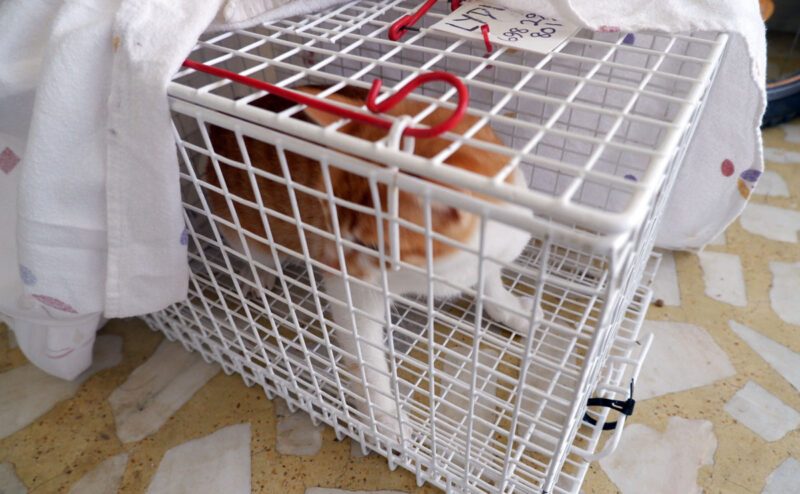
Re-exposure
Normally, a cat needs about 24 hours to recover. After that, it can be returned to its original location. All cats must be fully conscious and alert before being returned to their original location!
Once the trap is set with the cat in its original location, the trap door is opened and you move away. You should not be concerned if the cat takes some time to get out of the trap, as it is just getting used to its surroundings again.
The cat should only be released in another location if it is absolutely necessary. This is the case when its life is endangered by other feral cats in the area or when the location of the entire colony is moved together.
Commandments and prohibitions
There are some things you must always pay attention to:
- The emergency number of the veterinarian should always be at hand.
- One chooses a veterinary clinic near the place of residence.
- The trapped cats are kept in places which are free from pollution and noise.
- A first aid kit for yourself and possible helpers should be purchased, because your health is important!
- Capturing a feral cat is not easy. Many people who have tried this can report and probably demonstrate that injuries such as scratches and bites are commonplace when trapping feral cats. So if you decide to embark on this adventure, a tetanus vaccination is recommended, which should generally be refreshed every 5 years. Rabies vaccinations should also be considered if one is likely to frequently interact with animals that could potentially carry the virus, such as in rabies warning areas.
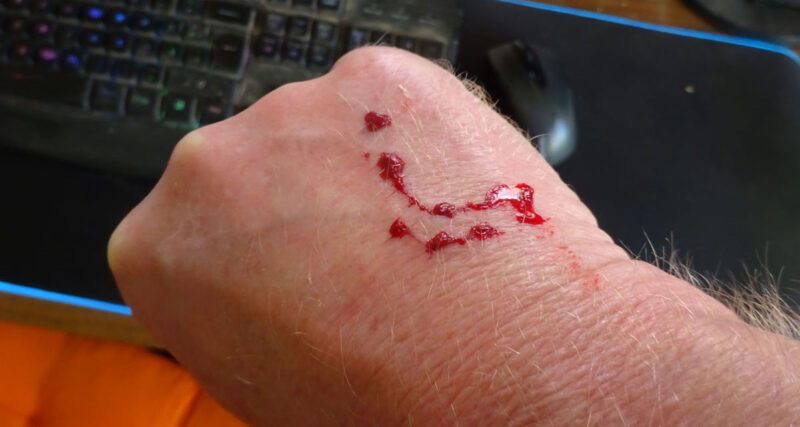
Some things, on the other hand, should not be done:
- You don’t leave set traps unattended.
- The trapped cats in the traps should not be petted or touched. Even if they look cute and sweet, this could endanger your own safety and health.





